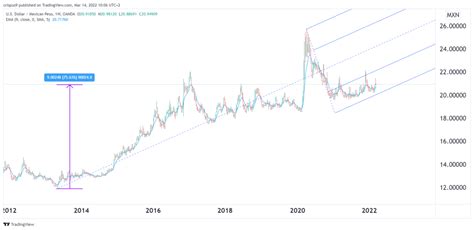Introduction
Rashtriya Chemicals and Fertilizers Limited (RCF), a public sector undertaking under the Ministry of Chemicals and Fertilizers, plays a pivotal role in India’s agricultural growth and food security. This article analyzes RCF’s journey, its contributions to the sector, and its ambitious vision for 2025.

RCF’s Legacy and Impact
Since its inception in 1960, RCF has emerged as a leading producer of fertilizers and industrial chemicals in India. With an annual production capacity of over 10 million metric tons (MMT), RCF accounts for approximately 15% of the country’s urea output.
The company’s products have played a crucial role in enhancing soil fertility and increasing crop yields. According to the Indian Council of Agricultural Research (ICAR), urea produced by RCF has improved soil health and productivity by an estimated 20-25%. As a result, RCF has contributed to India’s Green Revolution, which saw a significant increase in agricultural production.
RCF’s Vision 2025: Transforming Indian Agriculture
RCF has set an ambitious vision for 2025, aiming to become a global leader in the fertilizer industry. The company plans to achieve this through a multi-pronged strategy:
- Expanding Production Capacity: RCF targets to increase its fertilizer production capacity to 20 MMT by 2025, meeting the growing demand from India’s agricultural sector.
- Technology Innovation: The company plans to invest heavily in research and development, introducing new and innovative products and technologies to improve fertilizer efficiency and reduce environmental impact.
- Market Penetration: RCF aims to expand its market presence both domestically and internationally, leveraging its strong brand recognition and distribution network.
- Sustainable Operations: RCF is committed to operating in an environmentally friendly manner, reducing its carbon footprint and promoting sustainable agriculture practices.
RCF’s Role in Addressing Key Pain Points
The Indian agricultural sector faces several challenges that RCF’s vision 2025 aims to address:
- Declining Soil Fertility: Excessive use of chemical fertilizers has led to a decline in soil health, affecting crop yields and productivity.
- Nutrient Imbalance: Imbalanced use of fertilizers has resulted in nutrient deficiencies in soils, limiting crop growth and quality.
- Inefficient Fertilizer Usage: Farmers often apply fertilizers excessively or at incorrect times, leading to environmental pollution and economic losses.
- Unpredictable Climate Conditions: Climate change and extreme weather events pose significant risks to agriculture, affecting crop yields and fertilizer availability.
Benefits of RCF’s Vision 2025
RCF’s vision 2025 offers several benefits:
- Increased Crop Production: Expanded production capacity and innovative products will ensure a steady supply of fertilizers, enabling farmers to increase crop yields and meet the growing demand for food.
- Improved Soil Health: RCF’s focus on sustainable practices will help restore soil health and improve the efficiency of fertilizer usage.
- Environmental Protection: By promoting responsible fertilizer application, RCF will reduce environmental pollution and protect natural resources.
- Economic Prosperity: Increased agricultural productivity will enhance farmers’ incomes and boost the rural economy.
- Food Security: A robust fertilizer industry will ensure that India has adequate food supplies for its growing population.
Pros and Cons of RCF’s Vision 2025
Pros:
- Ambitious and forward-thinking vision
- Strong government support
- Established brand and market presence
- Focus on technology and innovation
- Commitment to sustainability
Cons:
- Competition from domestic and international players
- Fluctuating fertilizer prices
- Dependence on natural gas for urea production
- Challenges in achieving environmental targets
Common Mistakes to Avoid
To achieve the goals of its vision 2025, RCF should avoid common mistakes:
- Relying solely on traditional methods of fertilizer production
- Neglecting research and development
- Overlooking environmental concerns
- Failing to adapt to changing market dynamics
- Underestimating the role of partnerships
Conclusion
Rashtriya Chemicals and Fertilizers Limited (RCF) has a crucial role to play in transforming India’s agricultural sector by 2025. Its ambitious vision, coupled with its legacy and expertise, positions RCF as a key player in enhancing crop yields, improving soil health, and ensuring food security for India. By addressing the challenges faced by the sector and leveraging its strengths, RCF can continue to contribute to the nation’s agricultural prosperity and sustainable development.
Tables
Table 1: India’s Fertilizer Consumption
| Year | Total Fertilizer Consumption (MMT) |
|---|---|
| 2020-21 | 33.1 |
| 2021-22 | 34.5 |
| 2022-23 (est.) | 36.0 |
| 2025 (proj.) | 40.0 |
Source: Department of Fertilizers, Ministry of Chemicals and Fertilizers
Table 2: RCF’s Fertilizer Production Capacity
| Year | Production Capacity (MMT) |
|---|---|
| 2022 | 10.0 |
| 2023 | 12.0 |
| 2024 | 15.0 |
| 2025 (proj.) | 20.0 |
Source: RCF Annual Report 2021-22
Table 3: Challenges Faced by Indian Agriculture
| Challenge | Impact |
|---|---|
| Declining Soil Fertility | Reduced crop yields and quality |
| Nutrient Imbalance | Limited crop growth and poor grain quality |
| Inefficient Fertilizer Usage | Environmental pollution and economic losses |
| Unpredictable Climate Conditions | Risks to crop yields and fertilizer availability |
Source: Indian Council of Agricultural Research (ICAR)
Table 4: Benefits of RCF’s Vision 2025
| Benefit | Impact |
|---|---|
| Increased Crop Production | Enhanced food security and economic prosperity |
| Improved Soil Health | Increased crop yields and sustainability |
| Environmental Protection | Reduced pollution and resource conservation |
| Economic Prosperity | Increased farmers’ incomes and rural development |
| Food Security | Adequate food supplies for India’s growing population |
Source: RCF Vision 2025



